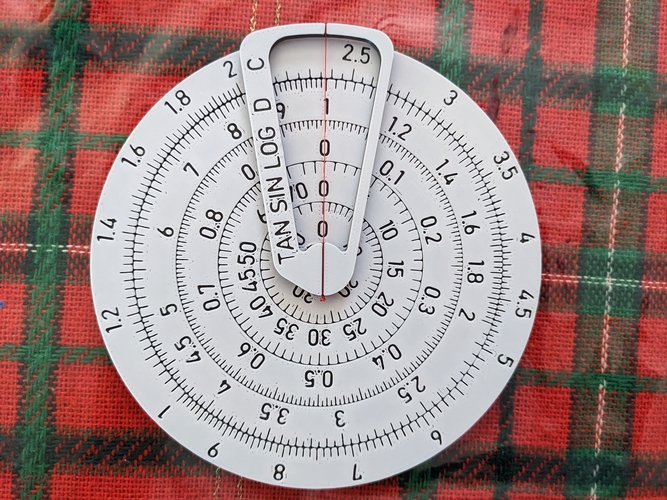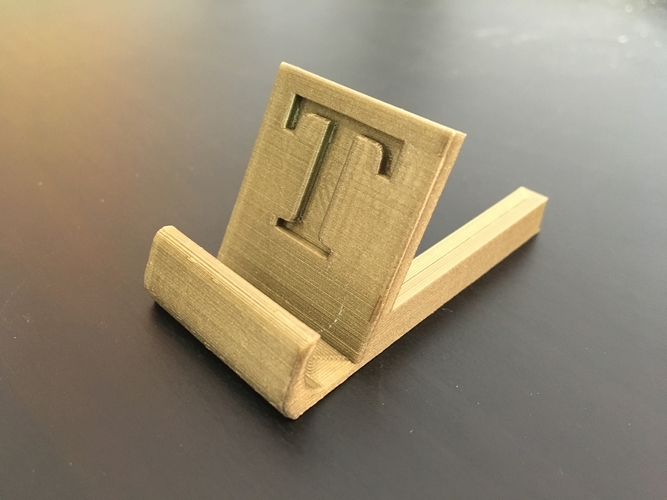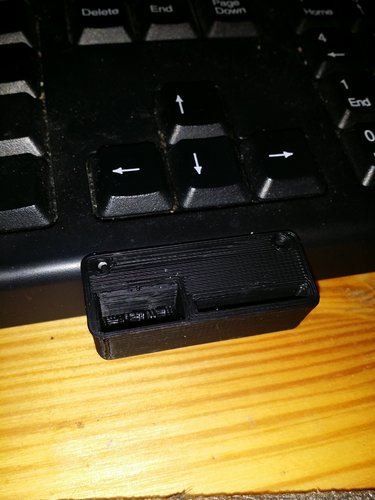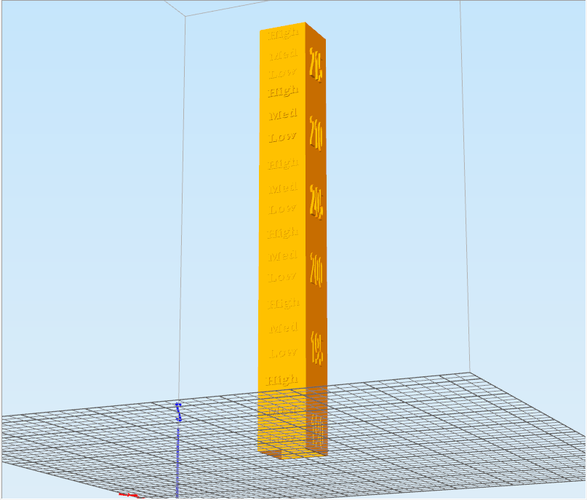
Description
To keep the slide rule alive and accessible to a a new generation of math enthusiasts I present to you: A trigonometric slide rule.
To multiply a number by another number, place the number "1" underneath the number you want to multiply on the outer scale, then locate the number you want to multiply by on the inner scale and the answer is on top of it on the outer scale.
The same is true in reverse for division, EX: When 2 is under 4, 1 is under 2.
If your multiplication would take you to a number higher than ten, simply, then start counting the notches on the outer scale after moving past "1" as 10s ex 1.5 = 15. The same can be true in reverse as 1.5 could also be read as 0.15.
An example of this in multiplcation: When 1 is under 8, 8 on the innner scale is under 6.4 and the answer is 64. An Example in division: When 4 is under 1, 1 on the inner scale is under 2.5 and the answer is 0.25
If you are comfortable handling tens places with scientific notation, then you can use this tool to multiply number of any magnitude by numbers of any other magnitude. "4" on either scale can represent 0.4 just the same as 4 million.
The Slide rule also does ratios: If x/3 = 7.2/4.6 then when 7.2 on the outer scale is over 4.6 on the inner scale, X is on ther outer scale over 3.
No cross multiplication necessary.
If you create a fraction on the scales, every version of that fraction is represented across the scales.
Numbers on the D scale can be converted to their log form and sin(x) and and tan(x) are used against the log scale to get a multiplier to use on the C and D scales.
Enjoy. Printing Instructions
0.4 mm nozzle
Print in place for the scales. May have to flex a bit free up the plastic on first use.
Print the window separate. Use fishing line or thread as the hairline.
I print my first 2 layers in white for the text and notches to have good contrast, then the rest in black.
Tollerance are 0.2 mm between the inner and outer scales. Lettering and notches are engraved in the top surface 0.4 mm.
Notches are 0.28 mm wide, a good first layer calibration is essential
135.5 mm outer diamter, 6 mm thick.






Comments (3)
Sign in to leave a comment.
"That's a fascinating approach to maintaining the slide rule's legacy! Using it for trigonometric functions and scientific notation is a smart way to make it versatile. For anyone looking to calculate and compare ratios or scale values, tools like <a href="https://www.kalkulimiipages.com/">Kalkulimi i Pages</a> can complement the slide rule by offering easy access to financial calculations and comparisons, making it easier to handle complex figures alongside manual methods like these."
Nice picture, I want to use one of these for a <a href="https://vatcalculator-ireland.com/">irish vat calculator</a>. Please create a logo for my website, and I will be grateful.
Olá, tenho um site relacionado ao 'contador de horas trabalhadas' e gostaria de usar a imagem encontrada em https://calculadoradehorastrabalhadas.app/. Seria possível utilizá-la?